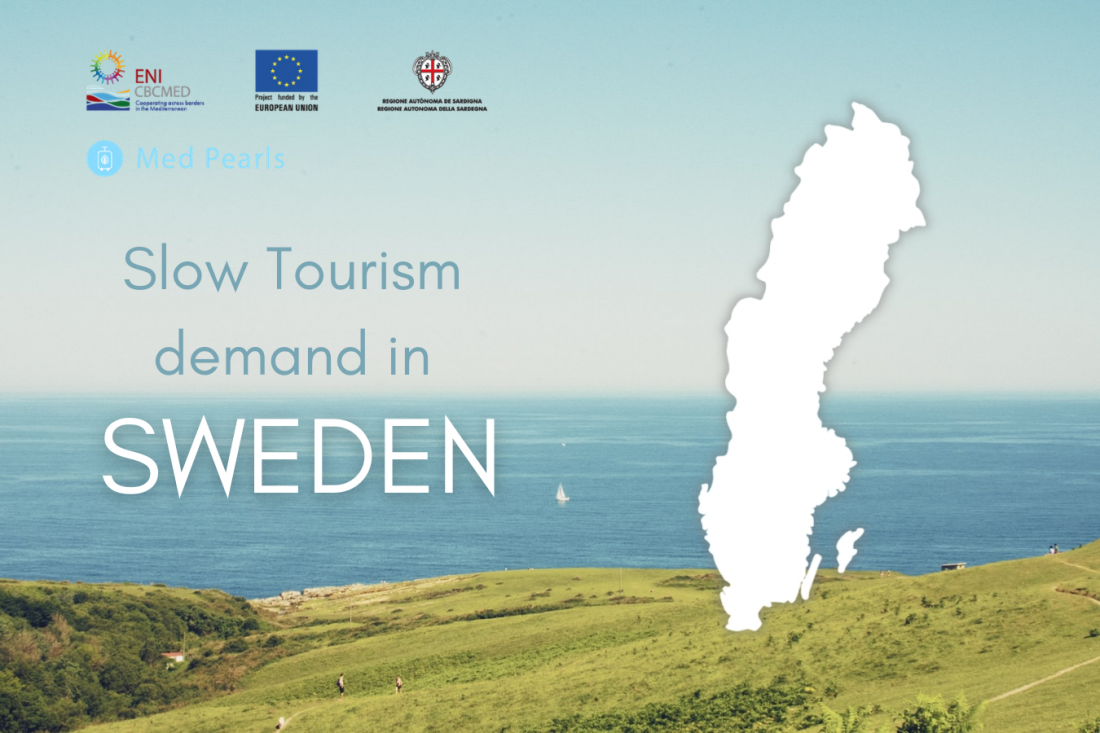Med Pearls: كيفية جذب السوق السويدية لمنتجات السياحة البطيئة الخاصة بك؟

المحتوى متاح باللغة الإنجليزية
Following the series of articles about the Med Pearls research projects on the international demand for Slow Tourism (the ‘Research study on Slow Tourism international trends and innovations’ and the ‘Analysis of the Slow Tourism International Demand’), we continue with the description of the main highlights of the outbound-markets of the Med-Pearls countries. In this article, we will focus on the information discovered regarding how tourism agents should create, promote, and market their slow tourism products in Sweden.
With a population of almost 10 million people, the number of Swedes that made domestic leisure trips in 2017 was of 42 million, and 19 million of these were overseas. An important number that forecasts predict will increase to 21 million trips overseas by 2028. Furthermore, in 2017 the total international tourism expenditure was of more than 15,3 billion US dollars, placing Sweden in the 20th place in the global rank. When choosing who to travel with, the research explains that 50% of Swedes usually travel with family and 25% travels with friends. The demographic group that tends to travel more are young women who age between 16 and 24 years old.
In 2018, the research shows that the most popular destinations of the Med Pearls project, by number of total tourist arrivals, were: Spain (2 million arrivals), Greece (500K thousand arrivals), Italy (490K thousand arrivals) and Egypt (60K thousand arrivals).
Tourism agents should be aware that the five main factors that Swedes consider when choosing a holiday destination are: culture and local people, cleanliness, active holidays, shopping options and the restaurants offer of the destination. The investigation shows that when Swedes choose their holiday plans, they usually look for:
- To be able to live ‘unique experiences’ not tried before. Remote destinations usually gain in popularity as they help them to enjoy experiences that give them new perspectives in their lives.
- Wellness and authenticity. They will usually also look for holidays that include wellness activities, as well as authentic experiences that allow them to integrate in the local culture and join volunteer activities.
- Sustainability. For the Swedish market, sustainability is becoming an increasing factor when planning their trips. Movements like Flygskam (Flight Shame) are gaining strong momentum and studies show that Swedes tend to be more climate conscious. The research shows that 62% of women and 55% of men in Sweden say they are prepared to change their travel habits to reduce their climate impact.
The research also found that although not being able to identify a Swedish slow tourist profile, there is another kind that presents common characteristics: the explorer tourist. In Sweden, this profile usually refers to singles, couples and/or empty nesters, that look for flexible travel options that can bring them opportunities to unwind, relax and enjoy natural landscapes. They are mature and open-minded, with a high interest in culture, art, and history. They also have a strong interest in coastal areas as well as lakes and mountains places, spa and wellness holidays, or themed group travels.
The research has not been able to find tour operators with ‘100% slow products’, however one of the main findings has been that more and more tour operators are looking for products linked to the slow principles, and responsible and sustainable tourism. Usually, the ones specialised in nature or outdoors activities are the most sensitive, and as it happens in the other markets, the tour operators more focused in slow tourism, are usually small or medium size operators.
Regarding fairs, the investigation has discovered that currently in Sweden there are no major tourism fairs being held. However, the largest tourism fairs in the Nordic countries are Feire for alle (in Denmark) and the Matka (in Finland). Although there are no fairs dedicated to slow tourism and there are also no fairs with a pavilion dedicated to this kind of tourism, the research indicates that agents should look to the different senior fairs called Senior Massan, which take place in different cities across the country.
Besides these outcomes, the reader will find that the research also developed an intuitive guide of recommendations to help in the creation of slow tourism products and how to get tour operators interested in their “slow destinations" and products. For further information on this topic, the Swedish market analysis, or the other studies done, you can check the links below:
- Market research on Slow Tourism Demand (Sweden list of operators, fairs, media and other relevant information)
- Sweden - Slow Tourism International Demand
- Manual and Analysis of the Slow Tourism International Demand
- Recommendations - Slow Tourism International Demand







